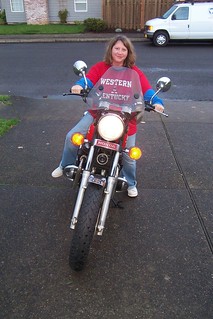 A nonprofit buys billboard space on a major highway. Thousands of people drive by the billboard every day. After a week, the marketing director declares the billboard a huge success because of the number of people that are driving by the billboard. However, there is no significant gain in donations, volunteers or clients by the organization.
A nonprofit buys billboard space on a major highway. Thousands of people drive by the billboard every day. After a week, the marketing director declares the billboard a huge success because of the number of people that are driving by the billboard. However, there is no significant gain in donations, volunteers or clients by the organization.
Does this sound like a ridiculous way to measure the success of a marketing activity? It is. Yet, that’s how I regularly hear people measure the success of social media use by a nonprofit, government agency or other mission-based initiative.
If your nonprofit is an animal shelter, or a farmer’s cooperative, or a community theater, or a health clinic, or any other nonprofit that serves a geographically-specific clientele, having thousands of Twitter followers is not an indication that you are having social media success. So what? That’s the same as the billboard out on the highway. It’s just a number, and if it’s not translating into something tangible, it’s a waste of money and effort.
For online activities to translate into something tangible, online action must create and support offline action or behavior. What could this look like?
- An increase in the number of volunteers providing service to your organization
- An increase in the number of volunteers who stay with your organization over a longer term
- A greater diversity of volunteers providing service, with greater representation from under-represented groups
- Greater numbers of donors
- More repeat donors
- New donors
- Greater attendance to conferences, workshops, etc.
- Greater attendance to events with an entrance fee, which creates greater revenues
- Greater numbers of downloads or purchases of a publication or other product
- Greater numbers of clients or people served
- More repeat clients
- A greater diversity of clients receiving services from your organization
- Larger numbers of people writing government officials, corporate representatives or the media regarding the cause your organization promotes
- Larger numbers of people filling out surveys that you will use in creating proposals, reports and publications regarding your organization’s work
- More feedback from volunteers, donors, clients and the general public regarding your work
- Volunteers and clients reporting a perception of greater support from your organization
- Volunteers and clients reporting a new / changed perception that relates to your mission (for instance, those you engage with online reporting that they are no longer prejudiced against a particular group or community) or a change in behavior or practice that relates to your organization’s mission (for instance, if you were an organization that promotes recycling, and those you engage with online telling you they are recycling more)
- Volunteers, clients, staff, the general public and/or the press reporting a perception of greater support from your organization, an improved perception of the organization’s impact, an increased awareness about the cause an organization promotes, etc.
A few hundred Twitter or Instagram followers may not sound impressive, but if most of those followers are in your geographic area, if there are lots of public officials and other nonprofit representatives and local people served by your organization among those followers, you’re doing well. If you are a nonprofit serving teens, and most of those followers are teens, you are doing VERY well. It’s not about the how many, it’s about the who.
How can you measure social media success ? I talk about that on my web page Evaluating Online Activities: Online Action Should Create & Support Offline Action & Results. For most nonprofits, measuring is not a matter of a software choice; it’s going to take a more person-to-person approach, involving surveys and interviews. In other words, engagement.
Quit celebrating how many people have “liked” your organization’s Facebook page. Are discussions happening on that Facebook page? Are people asking questions? Are individual status updates being liked and shared? Celebrate engagement.
Also see:





 In
In 


